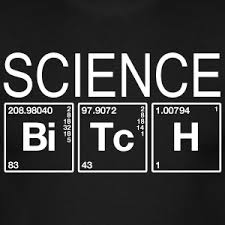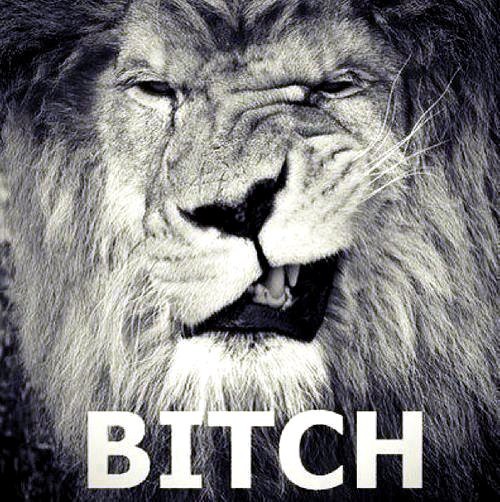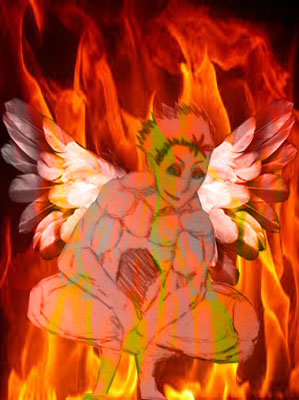Starred Up is a prison drama directed by Scottish filmmaker David Mackenzie, whose resume includes past films such as Young Adam starring Ewan McGregor and Tilda Swinton, and Perfect Sense, also starring McGregor with Eva Green.
It tells the story of 19 year-old Eric Love, who gets transferred to an adult prison after his overly violent sensibilities have rendered him unfit for the juvenile facility in which he had been placed. At this prison, he encounters none other than his own father, as well as an unconventional therapist who, through group sessions, aims to provide Eric with a sense of direction and fatherly guidance. Starred Up, with a script by Jonathan Asser, a former prison therapist, includes an extraordinary performance from Jack O’Connell and equally stellar performances from its impressive ensemble, telling a very compelling story in a simple but engaging way that incorporates a realistic setting to its aesthetic and thematic advantage.
Are you still based in Scotland right now?
I’m based in Scotland, although I’ve occasionally worked out of LA. So I occasionally think about moving here, just cause there’s more film activity.
This movie has a script by Jonathan Asser, who, I read, worked at a prison as a therapist. Was that what drew you to the project?
Well, what drew me to the project was that the script was very detailed and had a real sense of authenticity to it… there was a strong straight genre of prison movie on one level, but there was also a sensitivity and a sense of hope and… there’s some quite pioneering stuff in terms of some of the therapy and a sense of you dealing with the subject, but also bringing some humanity to it, and I was very excited by the idea of this combination, and at that point, in my trajectory as a film director, I hadn’t done a straight genre film and I hadn’t really explored something on a really realistic level before, so seeing this script and taking the opportunity to find a real jail, which was the first time I did when I read the script—find a real jail, and don’t cheat … when I say cheat, I mean the geography … in filmmaking, you’ve usually got a set here, and you’re cutting to it, and you’re also faking it—trying to find something that means that you’ve got as much geographic integrity as possible, and let the location be what it is. And so, we did that, we found this location, and the combination of Jonathan’s script and this location, and then the incredible cast, and playing it straight, shooting the film in sequence … I’ve never done any of these things before, and so it was a very, very pure process, and a very purifying process for me, and I felt very good doing it, and I’m really, really pleased with the result. I feel very happy that all of the tough stuff is all there, but also all of the sensitivity and all of the humanity and all of the, you know, small amounts of hope are really nicely balanced, and it feels like a stronger, proper, grown-up movie.
I actually wanted to ask about that; shooting on-location in a real prison—did that pose any challenges, did it give you more freedom, was it more inhibiting?
The particular challenges are … first of all, it’s not a working prison; it’s in good condition but no longer used. The architecture, the way the steel, the concrete, the stone, all of those things are very strong, they’re very hard, and they’re kind of oppressive, but what they do is they have a very powerful atmosphere, so you turn up on set, half of the atmosphere of the film is already there for you, so you don’t have to reach to find it, it’s already there. And the actors—I made the decision that the actors didn’t get trailers—they got cells. And so everything was in the body of the jail, so you’re feeling it everyday, you’re going to work and you feel it, and it shows in the film, and it’s part of the character of it. I was really worried that … all of that aggression, all of that tension, would sometimes spill out of the film into the rest of our lives while we were doing it, but in fact … it was all very focused on the thing, but you’d leave it behind and you relax for a second and you go back into it again and it was really… an extremely positive shoot, for me anyway. I think Ben Mendelsohn found it hard, you know… Belfast in February… you know, he’s Australian, he’s not used to the cold, and it was intense, but we all really worked well together.
There’s a lot of gritty stuff, there’s a lot of violence in this movie—so the actors were able to just leave it behind?
Well, certainly that’s what I felt. I felt that there was … everyone got along really well with each other, and, you know, I felt that that’s exactly what they did. But they were able to kind of pick it up and go right into it and it was really … hard, and proper, realist, slightly method-y acting. But at the end of the day, it was OK.
Obviously, this isn’t one of those movies where you watch it and you think: “Oh, I’m sure they had a lot of fun making that!” Despite that, were any cool or memorable moments from set?
One of the weird things about filming in a confined space, a place of incarceration was … all of the enclosures of that is at the heart of the creative process. And around the camera, there was a lot of fun all the time. It was a very controlled environment … I was very much in control of everything that was happening in that environment, but within the creative center, everyone was free to do what they wanted to some extent. And that was great; it was a perfect combination of sort of putting your protective arms around the thing but then allowing it to breathe and allowing it to be itself.
How long did the movie take to film?
The shoot was 24 days.
24 days. And how many of those days were [stunt work]? Cause there are a lot of stunts in this movie.
24 days, and I think, 18 of them were stunt days. So that was my biggest fear, that A) 24 days would be fine for the film if it wasn’t for the stunts … the stunts are quite complicated and we wanted to make them feel as real as possible … but my fear was that the realism, or the dramatic part of it, would somehow clash with the … you can’t shoot a stunt scene for real in the same way. You have to choreograph it so that people aren’t gonna get hurt, so they would feel like they belong to different movies, but in fact, the stunt team was great, and they understood the game, that we didn’t want it to feel choreographed, that we wanted it to feel messy. And so the stunts in the rest of the movie mesh quite well together, and it’s one of the things I’m most pleased about in the movie.
So, what was the process like, assembling this really great cast? Was it easy? Or did it come as a challenge?
It’s always a jigsaw puzzle. It wasn’t a problem to do. I mean, I found Jack very simply through an audition process, and that was great, and then Ben and Rupert came quickly, and then all the rest of the characters kind of filled in around them. My casting director Shaheen Baig is really good; I’ve worked with her before, very intuitive process. But it came together nicely, and I couldn’t have asked for a nicer cast, or a better cast. Everybody’s all focused on their characters and they’re all completely believable.
And Ben’s from Australia, correct?
Correct.
So did he have to have any dialect coaching?
He had dialect coaching, yeah.
That’s cool. Did you have any favorite parts to shoot? Or the most difficult?
The nicest parts to shoot were the group scenes, for me. Because we shot the film and the story in order, normally you’d shoot those scenes back to back. But because we were in story order, it was once every four or five days, you’d get a group scene. And each time, you go into that room, and it’s just a box with chairs, and the guys would—we’d explore the scene—and there was a lot of energy and dynamism in there and it improvised around the scene. The scenes have to be fast so we had to add a minute or two of improv at the head of each scene, and half a minute at the tail, and some of that ended up in the movie, so that by the time you hit the text, you’re running at a hot speed. And just doing that each time was great inventiveness, great energy, really good fun, and lots of drama, and then five days later, the guys would have time to kind of evolve their characters a bit. They’d come in with a different attitude, the story had moved on, so we’d all come up with a different attitude, and we’d start it, we’d do it again, so each time you went to those group scenes, you’d get a really different flavor. Because there was such a high page count—the scheduling of the movie is usually done by the page count—I’d have like, instead of two hours, I’d get three hours to shoot that scene, so I’d have the chance to shoot a few more angles, and so it was good fun, and I had a little bit of a luxury of time and great stuff, so those are all my favorite scenes. And I love the way they work in the movie as well, cause there’s moments of lightness and there’s moments of real, real drama. The scene where Dennis and Hassan are tussling with each other, and you think they’re gonna fight and then they calm down slowly—I love that. I love the de-escalation. We cover escalation all the time but de-escalation in a movie is something that doesn’t really—you don’t really see it in the same way. The energy of it, it never deflates slowly; it’s a jagged deflation, and there’s something really interesting about it.
There’s always this little, kind of, tangible energy throughout, even though stylistically the movie’s very stripped-down. Were you inspired by any body of work, or any person’s work in particular to tell the story in this very simple way?
Yeah, there’s Robert Bresson, he’s a French filmmaker who made a movie called A Man’s Escaped, and if you’ve seen it, you’ll know. This movie is a movie I saw three days before we started shooting—I mean, I’d seen it many times before—but it’s incredibly sparse and it uses its limited palate of doors and windows in a way that I was hoping to echo. It’s amazing how with so little, you get great tension and intensity, and I think that that’s what we wanted, this sense of, you know you’re in an environment where something’s gonna happen at any moment.
So, to wrap it up, do you have any upcoming projects that we can look out for?
Yeah, I’ve got a few projects that I’m juggling. We’ll have to work out which ones come about. There’s a Warner Bros. project called The Mission which I’m attached to which is about this rescue mission that happens in South America. It could be a really interesting action movie. You know, I’ve never done an action movie before, but I could apply some of my sensibilities to it, which I think could be really interesting. And I’ve got a medieval epic in Scotland, which we’re trying to do—warriors and a king making stuff—which again, has got sort of an action element. A couple of British spy things I’m looking at … I’ve written a sci-fi. I don’t know which will happen, but hopefully I’ll be making a film again soon.
-Ziye Hu
The Tribeca Film release is now playing in New York, on iTunes & VOD and expanding nationally in September.
Edited by Shaina411


